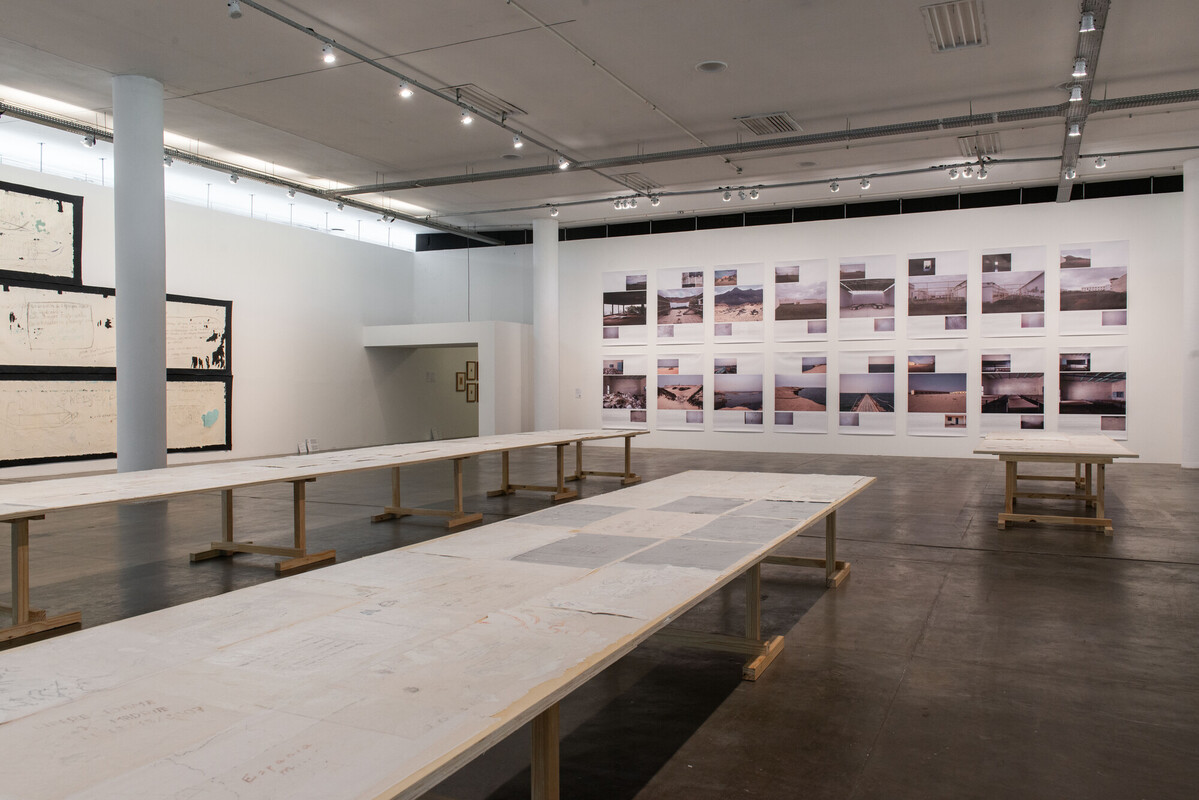
Patricia Gómez & María Jesús González
Our artists’ projects and interventions start from conflicting and residual spaces: gentrified neighborhoods, deactivated prisons, disused psychiatric hospitals or, as in À tous les clandestins [For all the clandestine] (2019), abandoned detention centers for immigrants.
These peripheries of meaning articulate discourses of stress and semantic saturation which, alluding to the marginal, write the centrality of what we do not see because we do not wish to see it.
Reading in the oblivion of these margins – in the degradation of these social residues – implies writing, from the ruins of silence, the core of a memory that is a superposition of texts.
The Nouadhibou migrant detention center in Mauritania, created to control the movement of migrants by sea from Africa to the Canary Islands, responds to a physical reality and, therefore, to a simultaneous moral reality.
The proposal of María Jesús González and Patricia Gómez is basically in line with this physical reality. In fact, in this and other projects, they follow traditional artistic-technical guidelines: printmaking, engraving, removing murals, photography, and video. In addition, the exhibition of the works produced is also traditional. However, beyond the aesthetic, what is proposed does not place us in front of an object, but in front of a subject: an active subject that activates us and challenges us ethically.
The subject of this would seem to be narratively concerned with memory as all the interventions of these artists have an archaeological sense based on the systematic recovery of differentiated strata of signs. Despite this, such an archaeology is based neither on a restoration of the lived experience nor on its documentary rescue, but on making us experience a recuperation that escapes from the nostalgia of memory and its late-romantic drifts.
If this is so, the work shown is not a result, but the traces of a process: that of our experience as ethical subjects.
david pérez
translated from Spanish by ana laura borro
Patricia Gómez and María Jesús González (Valencia, Spain, 1978. They live in Valencia) develop a collaborative practice in their works with videos, photographs and large-scale prints about abandoned places since 2002. They have held solo and group exhibitions in USA and in Spain, such as in Fundació Pilar i Joan Miró (Palma, Spain).
This participation is supported by Acción Cultural Española (AC/E) and Embajada de España en Brasil.

 Português
Português